
by John P. Pratt
23 Jul 2017, 1 Jachin (P)
©2017 by John P. Pratt. All rights Reserved.
| 1. The Priest Calendar |
| 1.1 24-Week Pattern |
| 1.2 Correlation |
| 2. Name Translations |
| 3. Historical Dates |
| 3.1 Jeshua |
| 3.2 Jehoiarib |
| 3.3 Seorim |
| 3.4 Malchijah |
| 3.5 Abijah |
| 3.6 Hezir |
| 3.7 Aphses |
| 3.8 Pethahiah |
| 3.9 Jehezekel |
| 3.10 Jachin |
| 3.11 Delaiah |
| 3.12 Maaziah |
| 3.13 The Deluge |
| 4. Conclusion |
| Notes |
Recently while preparing posts for my new sacred calendar tutorial being posted on Instagram at sacred_calendars and also on this website, it became clear that because of its simplicity the Priest Calendar has been marginalized in my work. The only description of it is found in the article first proposing its existence. There has not been so much as even one picture of it in all of my work. This article is to remedy that oversight and help establish that calendar as a strong witness of the Creator in its own right.
The only article in my earlier work about the Priest Calendar establishes certain basics features, so they will only be briefly repeated here.[1] The Lord told King David to cast lots to put in order 24 priestly families who were descendants of Aaron (1 Chron. 24:7-18). Aaron was the brother of Moses who had headed the Aaronic Priesthood (his namesake) for doing service and ordinances in the holy temple which David's son Solomon would build. Each of those families would then preside for one week, with the new family taking over each Saturday at noon.
 |
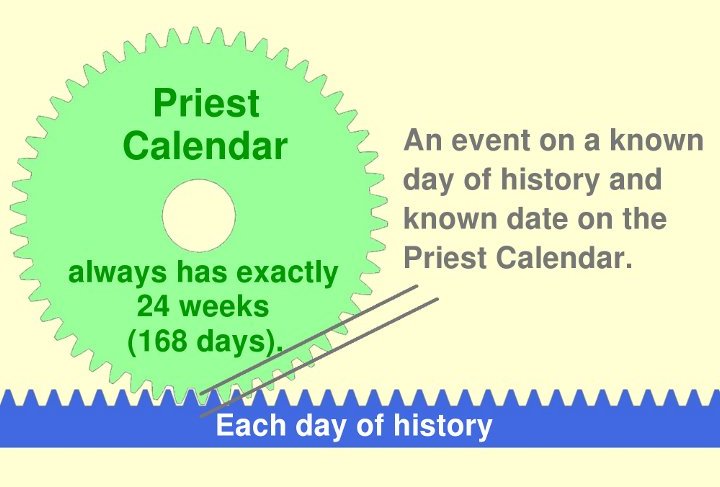 |
Fortunately, there exists at least one date which was recorded by an eye-witness observer both on the Hebrew Calendar and the weekly calendar, which was also recorded on the Priest Calendar. The Jewish historian Josephus recorded the date of the burning of the Second Temple in Jerusalem as having occurred on a Sunday morning, which he referred to as the day after the weekly (Saturday) sabbath, and also being on the day 10 Ab on the Hebrew Calendar in the year we would call AD 70. He was impressed that both dates were the same at the burning of the First Temple by Nebuchadnezzar. Other ancient Jewish sources record that the day was also in the week of Jehoiarib, the first week of the Priest Calendar.[3] That is just the kind of information needed to pin down the Priest Calendar precisely. The day 10 Ab corresponds to Sun 3 Aug 70 (Gregorian). Thus we get a self-consistency confirmation that 10 Ab did indeed fall on a Sunday that year. Finally, Sunday morning in the week of Jehoiarib corresponds to the final part of the day 1 Jehoiarib.
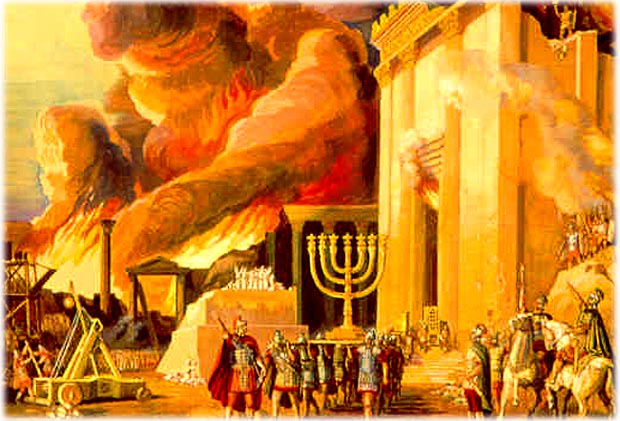 |
Now the question arises whether or not this is indeed a sacred calendar that God appears to be using or whether it was just a fair way to randomly assign families to take turns working in the temple. There are two lines of reasoning which provide compelling evidence that this is indeed a sacred calendar indicating some key religious events in history which occurred on appropriate days on that calendar. First let us look at the meanings of the names of those families and then look at what events did indeed occur on meaningful days on the Priest Calendar.
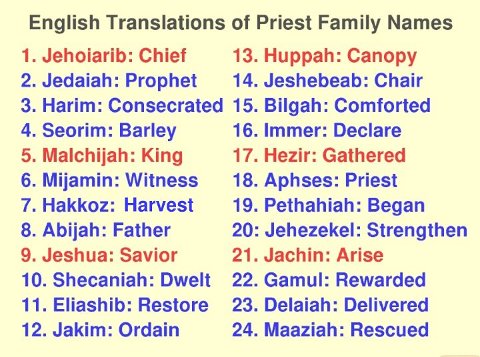 |
Table 1 presents an English translation of each of the 24 family names. The translations were not done with the target of representing a known role of the Savior but are in most cases to be simply an accurate translation of the names. In some cases a little understanding of the symbolism may be required. For example, the fourth name Seorim means "Barley Grains" which is what was offered as the first fruits of the ground during the Passover week. It might have been translated "Firstfruits", but it was left as "Barley" hoping the reader would remember the connection. Similarly the sixth name Mijamin refers to the right hand, but it is used religiously to mean "Witness" so that was the choice. And the seventh name Hakkoz literally means "The Thorn" but comes from a root meaning "Harvest". In every case an attempt was made at the best possible translation of the intended symbolism.
Now let us turn to seeing how many sacred events of history occurred on holy days of the Priest Calendar with names which corresponded to the event. This provides compelling evidence that the names are not random but were chosen with God's foreknowledge.
Given that all of the priest family names translate to something sounding religious and even like the roles of Jesus, how can we know that any given event that happens on a Priest Calendar holy day truly had intended meaning rather than simply being a random coincidence?
That question is really at the heart of many of the dates proposed for historical sacred events in my Religious Chronology where more information and references on all of the dates presented in this section can be found. The rule used in my past articles is that there must be at least two or three compelling witnesses to include any date. One lone witness, no matter how strong, could still be a chance coincidence. The same rule is applied here and the reader may decide how convincing the evidence is. As always, all of my results are a work in progress and subject to future revisions.
Let us begin by reviewing the three witnesses of one particular family name (Jeshua) and then consider many others. Half of the family names are discussed in detail, each having three example uses which mostly relate directly to priesthood ordinances. None of the examples given relates to the birth or death date of any individual because vital dates do not appear to be scheduled on the Priest Calendar. Rather, this calendar seems to be used mostly to schedule priesthood events.
Let us begin with the three examples given in the first article. They were compelling enough at that time to propose the acceptance of the Priest Calendar as a bona fide sacred calendar used by the Lord. Here's why that still appears to be the case.
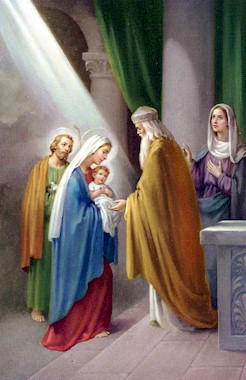 |
The first date is that proposed for the Annunciation when the angel Gabriel appeared to the Virgin Mary and announced that she would be the mother of Jesus. The date proposed for that was on the Hebrew holy day of Firstfruits (Pentecost): Sun 13 Jun 2 BC am. That fell on the major holy day of 1 Jeshua on the Priest Calendar (P). Firstfruits is indeed a day for priesthood ordinances.
The second date is the one prescribed in the law of Moses to bring a newborn son to the temple to present to the priest with an offering on the fortieth day of His life (Lev. 12:2,4,6). If the Savior was born on the evening beginning Passover (Perpetual Hebrew or PH), Wed 5 Apr 1 BC, as proposed in my work, then the fortieth day of His life would have included Sun 14 May 1 BC am. That time corresponds to the major holy day 1 Jeshua. That means that the priest on duty at the temple would have been from the Jeshua family. Thus, Jesus was presented to the Jesus priest!
The third witness comes from the opening day of His public ministry, which was Passover (PH) (John 2:23), a day of priesthood ordinances. That day, Sat 6 Apr 30 pm, began the major holy day 1 Jeshua (P). On that day He did healings, which are priesthood ordinances.
Thus, there are three major events in the life of Jesus which occurred on "1 Jesus" days on which priesthood ordinances were performed. To me those examples alone were compelling that this was not all chance! Remember, the alignment of the Priest Calendar to our Gregorian Calendar was done by dating the burning of the temple in AD 70.
The first day of the Priest Calendar cycle is 1 Jehoiarib. That name translates to "Jehovah will contend". It would correspond to the role of the Savior as the "Lord of Hosts", which means "Lord of the Armies". My one word translations required words which are short as they appear in columns of tables, so my proposed translation is "Chief", having a double meaning. First, it is the Chief of an army, as in "Commander-in-Chief". Second, it brings to mind the top, the head man, and in this case the first week of the 24-week cycle.
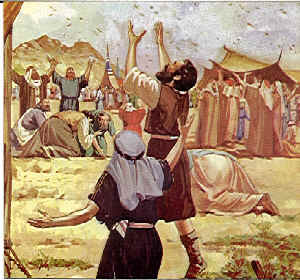 |
That day was the major holy day 1 Jehoiarib (P). That was interpreted in my work not as a random coincidence but rather as indicating the date on which Adam was ordained to the patriarchal priesthood. If so, then it was a huge date in the history of the priesthood on earth. Moreover Adam is the mortal name for the archangel Michael who has been commander-in-chief of the Lord's army (Rev. 12:7), so the name and meaning of "Chief" is also a match.
Another date which fell on 1 Jehoiarib was the date of the Fall of Adam: Sat 26 Jul 4004 BC pm. That was clearly the beginning point of a new age and an appropriate starting point for a new beginning.
Other examples of religious events which represented starting dates beginning on 1 Jehoiarib were the starting of manna appearing on the morning of Sun 10 May 1462 BC. A fourth example was the beginning of the actual rotation of priests in Solomon's Temple on the Feast of Trumpets: Sat 5 Sep 972 BC pm. It is truly a day for priesthood beginnings.
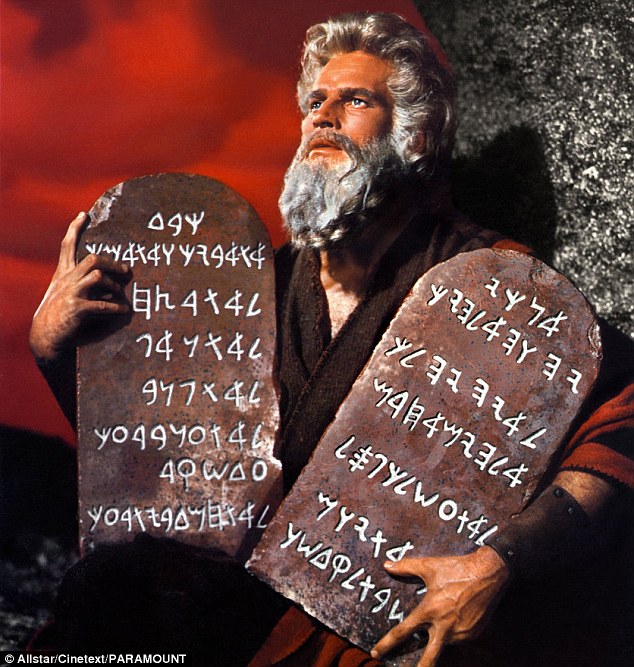 |
There are at least three key religious dates which fell both on Firstfruits and also on the day 1 Seorim (P). First, the giving of the Ten Commandments is held in Jewish tradition to have occurred on Firstfruits. That is confirmed by my research: It occurred on Sun 31 May 1462 BC am, which was Pentecost that year. It also fell on the day 1 Seorim (P), the priestly day representing Firstfruits.
Secondly, my proposed date for the Fall of Jericho, Sun 6 Jun 1422 BC, was also both Firstfruits (PH) and 1 Seorim (P). Again, that was a day of priests blowing trumpets as they encircled Jericho seven times and it was the same holy day on both sacred calendars. This is an example of how sacred calendars can provide multiple witnesses of the correctness of a date.
A final example occurred on the celebration of Firstfruits which is called the "Day of Pentecost" in the New Testament: Sun 22 May 33 am. You want multiple witnesses? Well, that day was the day representing Firstfruits on six different sacred calendars (PH, E, UE2, P, UJ, UH), which list includes being 1 Seorim on the Priest Calendar!
The name Malchijah means "King of Jehovah" in the sense of "King appointed by Jehovah". That name suggests a close relationship to the Melchizedek (King of Righteousness) Priesthood, which is all about becoming a priest and a king. Thus, it appears to be more than random coincidence that the date of the ordination of the first high priests in the Melchizedek priesthood in these latter days on Sat 4 Jun 1831 were ordained on the day 1 Malchijah (P). That's a bull's-eye.
A second very similar date was recently proposed as the founding of the Kingdom of God on earth: Sat 6 Apr 1833. That afternoon also was 1 Malchijah (P), and again the date had everything to do with kings appointed by the Lord Jehovah.
A third example is the ordination date of Noah on Sat 28 Nov 2933 BC. That was also a priesthood ordinance and Noah definitely became a king and priest over the whole world for some time. Thus, again we see three examples which had to do with priesthood activities apparently scheduled on the Priest Calendar.
 |
A date for the birth of John the Baptist has been proposed long ago in my work: Wed 6 Oct 2 BC, but not for the visit of Gabriel to Zacharias. When did the course of Abijah begin before the birth of John the Baptist? Interestingly enough, 1 Abijah fell on the day Sat 19 Dec 3 BC. That is some nine and a half months before 6 Oct 2 BC. Thus, it is here proposed that the visit of Gabriel to the temple occurred on Sat 19 Dec 3 BC pm being 1 Abijah (P). That day was also the winter solstice on the Enoch Calendar. It was a major holy day also on the Star Calendar, being the day of the bright star Altair, the head of the Eagle. Because Zacharias is of the House of Abijah and the angel came on this holy day, this date is being counted as a double witness.
The third witness is the day proposed in my work on which Father Abraham was given the covenant and ordinance of circumcision: Sat 28 Mar 1953 BC pm. This ordinance is related directly to fatherhood, in that it was for descendants of Abraham (and those of his household). Certainly Abraham was a "father chosen by Jehovah"! Thus, it seems most fitting that that afternoon also began the day 1 Abijah (P).
The name Hezir means "Protected", coming from a root that means "penned" as in protecting farm animals by keeping them in a pen. Another possible meaning is related to using "pen" as a verb meaning to "gather" them into a pen for protection. Thus, my proposed translation is "Gathered".
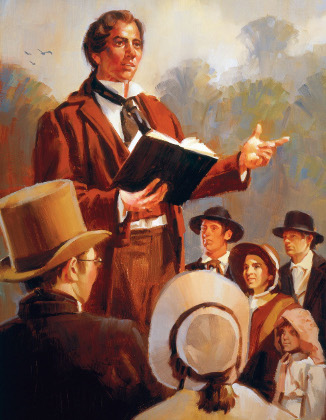 |
The second example is the departure of Lehi from Jerusalem on the evening of Sat 5 Apr 601 BC. His story is very similar to that of Noah and the dates are similar also, except they are at the beginning of the journey. To start with, that day was also 1 Hezir, which could again represent that his family had been gathered in for protection, being in the Lord's care. Moreover, it was also the first day of Passover (PH) and also the first day of Transplanting (UJ). So on three similar calendars the same story is of Lehi beginning his journey. Hopefully the reader sees that all of the coincidences quickly get far beyond merely being caused by random chance.
The third example is the day of the beginning of the public ministry of the restored Church of Christ just after the founding of the Church by Joseph Smith. On Sun 11 Apr 1830 am the first public sermon was given and more people were baptized. The date on the Star Calendar is that of the star named in my work "Cast Net" referring to the Ram casting out a net to gather in the two fishes of the constellation of the Fishes (Pisces).[5] It was a day to begin gathering those who would accept that the Lord had spoken anew. It was Easter Sunday morning (PH, E), Passover (J) and Firstfruits (UH). Again these calendars together tell a story and the Priest Calendar has its own story to tell.
There is fourth example of priesthood gathering on 1 Hezir. On Sun 3 Apr 1836, Moses appeared in the Kirtland temple and bestowed the keys of the gathering of the lost Ten Tribes of Israel to the Prophet Joseph Smith and Oliver Cowdery (D&C 110:11). Again that was an Easter Sunday and sacred on other calendars.
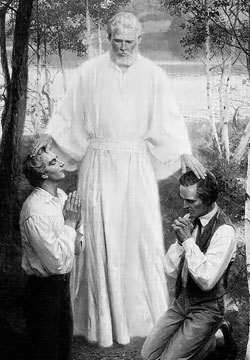 |
The first example is the day proposed in my work that John the Baptist returned and ordained both Joseph Smith and Oliver Cowdery to have the authority of a priest in the Aaronic Priesthood. That is a bulls-eye again.
The second example is the date of the ordination of John Smith, son of Hyrum Smith, to be the Presiding Patriarch of the Church on Sun 18 Feb 1855 am. That day was 1 Aphses. He remained the Patriarch for 55 years until 1911. It was he who ordained his half brother Joseph F. Smith to be the President of the LDS Church, according to the order understood by both of them.
The name Pethahiah means "Jehovah has opened" in the sense of beginning; hence it is translated "Began". Let us look at three examples of this date.
The first instance is what is called in my work "Ark Day". It was the day one week before the Deluge began when Noah began to load animals into the ark. It was truly a beginning day for that whole year-long event.
The second example is the morning after the feeding of the 5,000 with the loaves and fishes when Jesus introduced for the first time the concept of the priesthood ordinance of the Sacrament of the Lord's Supper. He taught the multitude that they must eat His flesh and drink His blood in order to be raised up at the last day (John 6:54). That was definitely a priesthood beginning day!
The third example is the Saturday afternoon on which Jesus was transfigured: Sat 2 Oct 32. It was one of the most holy days in history, being holy on nearly every sacred calendar. It was clearly a beginning day of some sort, although the meaning has not been well understood. Thus, three "first day" events occurred on the Priest Calendar day meaning "Began".
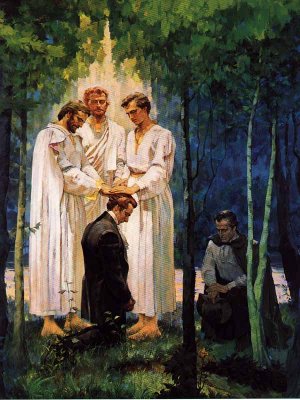 |
The first example of such is called Deluge Day in my work. It occurred exactly one week after Ark Day when the ark began to be loaded. It is the day the rain began to fall. It was a good day to strengthen those aboard to be able to withstand the rigors of surviving the Deluge.
The second example day is Sat 10 Apr 1422 BC, the day on which the children of Israel crossed the Jordan into the Promised Land. That was 1 Jehezekel (P), and a good day on which to be strengthened after having spent 40 years in the wilderness. They would now have to fight battles to inherit their new land and strengthening would be in order.
The third example is the day on which Peter, James and John appeared to Joseph Smith and Oliver Cowdery when Oliver was so tired from running from a mob all night that he could not take one step further. It occurred around dawn on Sun 31 May 1829, being 1 Jehezekel (P). They were given strength through a priesthood ordinance of the laying on of hands, so this day was a perfect example of priesthood strengthening. Oliver and Joseph were then able to continue on home.
 |
The first example is the day of the resurrection of Jesus Christ on the morning of Sun 3 Apr 33. That day was 1 Jachin (P)!
Another example is the day of raising the tabernacle of Moses. It was done on the 8th day of a ceremony, and the eighth day is symbolic of resurrection according to the Book of Barnabas, which says that the seventh 1,000-year day of the history is the millennium in which the earth will rest, and then on the eighth day it will die and resurrect to become a new world. It says that is the reason that Jesus resurrected on the eighth day of the week, which is the same as the first day. The tabernacle (representing the body) was raised (resurrected) on Sun 13 Mar 1461 BC am, which was 1 Jachin (P). That was the eighth day since both it and Aaron had been anointed (Lev. 8:10,12,33; 9:1). Not only was the tabernacle raised on the eighth day since its anointing, that day was also the first day of the first month of the year after the Exodus (Exo. 40:17)! So it was raised on both the eighth day and the first day!
There is another huge 8-day symbolism of this same concept which has been entirely overlooked in my work until now as this article is being written. The body of the Savior also was raised in the Resurrection on the eighth day since it had been anointed by Mary (John 12:1,3)! That anointing took place on Sun 27 Mar 33 am, on 9 Nisan (PH), 7 Quake (SR), 7 Death (V), 1 Jehezekel (P, "Strengthen"), and star day "Minister" (S), it also being the day before the Triumphal Entry. On top of that, the star days were the same both at the anointing of both the tabernacle of Jehovah and the tabernacle (body) of Jesus on Minister (S) and of the raising of both a week later on Ram (S)!!
As if all of that weren't enough, this symbolism was all repeated at the dedication of the Kirtland Temple on Sun 27 Mar 1836 followed by the appearance in it of the Savior on the eighth day (Sun 3 Apr 1836)!
The third example was the day that Pharaoh awoke to the fact that he had let his Hebrew slaves all go. That awakening occurred on a Sunday morning, and as been shown in my articles that Sunday during Passover week is actually part of the Passover ritual and is symbolic of awakening at the Resurrection. That Sunday was Sun 12 Apr 1462 BC, which occurred on 1 Jachin (P). Thus, we see three examples of Jachin representing not only arising, but arising at the Resurrection.
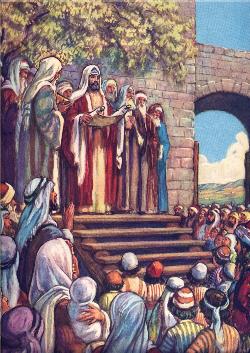 |
The first example is during the Deluge when the flood waters abated. That occurred on Sat 24 May 2342 BC. That day was 1 Delaiah (P). It was symbolic that those in the ark had been delivered from the destruction of the rest of the world.
The second example is when King Josiah of Judah read the law of Moses which had been found. That occurred on the Feast of Tabernacles on Sat 3 Oct 623 BC pm. That was the day 1 Delaiah (P), which seems appropriate to show that again Judah would be delivered by his works of righteousness.
The third example is the ordination dates of Enoch on Sat 21 Apr 3352 BC pm and of his father Jared on Sat 6 Apr 3340 BC pm, both of which days were 1 Delaiah (P). In my work it has been shown that there is often a calendar link between father and son where some important event happens on the same day for them. One such case is this father-son pair were ordained on the same day. Enoch was indeed delivered from the world's wickedness when his entire city was translated.
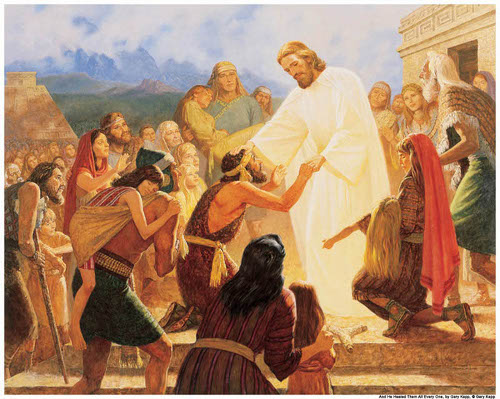 |
The first example date is that of the day on which Noah and his family exited the ark. That occurred on Sat 15 Nov 2342 BC pm, which was both the Last Day of Watering (Jubilee) and also 1 Maaziah (P). There could hardly be a better example of someone being rescued than those on the ark!
The second example is the day on which the Savior appeared to the Nephites after His resurrection. The date which was proposed in my work for that event is Sun 26 Mar 34 am, which was 1 Maaziah (P). He spoke to those who had been rescued from the great destruction which occurred at His death.
The third example is the day on which the Mormon "Golden Age" ended on Sun 6 Nov 1836 am, being 1 Maaziah (P). The Lord had rescued them from being destroyed by Satan for three and half years (Rev. 12:6) while they got their temple built and had its purpose fulfilled. They had been told that that time of rest would end and that Satan would again be given power over them. But for three and half years they had been rescued![6]
 |
Precise dates were proposed in an earlier article back in 2004 for many of those events during the Deluge. That paper was about the Jubilee Calendar, attempting to show that many dates fit its pattern such as the day on which to "Begin Watering" and to "End Watering", etc. No thought was given in that article to the Priest Calendar.
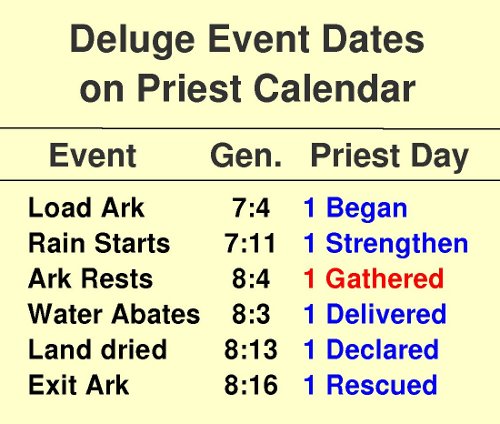 |
With that in mind, Table 2 lists all six dates during the Flood given precisely in Genesis which fell on a Saturday. The reference in Genesis is then given, followed by the holy day on which those afternoons fell on the Priest Calendar. More information on each is given in my Religious Chronology. The reader may decide if those dates are meaningful or not on the Priest Calendar. Remember, those names are essentially English translations of the names of 24 families descended from Aaron and put in order by King David casting lots. Moreover, the table refers to dates on our Gregorian that were published back in 2004 to show how they had perfect symbolism on the Jubilee Calendar. As for me, the entire universe looks less and less random whenever precise observations are studied!
In an earlier article it was shown that the 24-week Priest Cycle given in the Bible for priestly families to rotate temple service can be used as a calendar which can be precisely correlated to the Gregorian Calendar. This article builds on the translations of those family names into English given in the first article to show that over thirty dates of priestly events proposed in earlier articles all occurred on holy days on the Priest Calendar, where the activity of the event matched the meaning of the day names. This is presented as beyond random chance and as compelling evidence that God is actually using the Priest Calendar for planning many of His sacred events, such as at least six during the Great Flood. All of these witnesses provide strong testimony of the Creator and how He leaves His signature written in the heavens for us to learn to read and understand that these events are indeed the works of His hands.